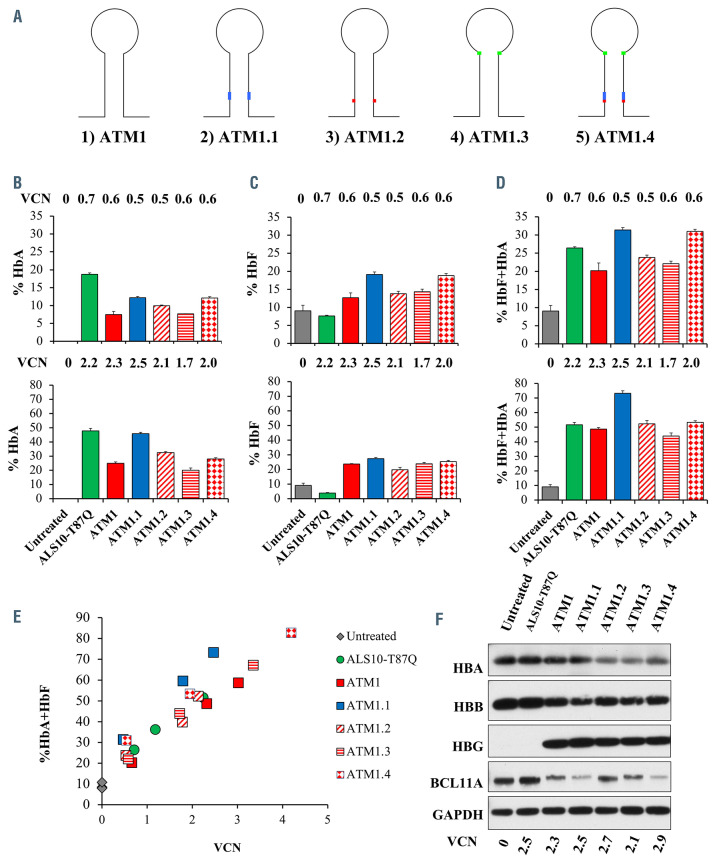Figure 2.
Optimization of BCL11A miRNA design. (A) Illustration of changes introduced into BCL11A miRNA sequence of ATM1.1 vector. ATM1.2 contains 1 basepair (bp) mismatch between the guide and the passenger creating a ”bulge” in our design, based on evidence from Fellman’s group, which demonstrated that inclusion of such an element can boost the potency of the miRNA.11 ATM1.3 presents a 2 bp modification of the published miR-30 loop to improve performance. 11 The modifications tested in ATM1.1, -1.2 and -1.3 were combined in the final design of ATM1.4. (B) Adult hemoglobin (HbAT87Q) (C) fetal hemoglobin (HbF) and (D) HbAT87Q+HbF levels at low (0.6+/-0.1, top panels) or high (2.0+/-0.3, bottom panels) integrations per cell after transduction of M#9 with ALS10-T87Q, ATM1, and its variants ATM1.1, ATM1.2, ATM1.3, or ATM1.4. (E) Graphic representation of the proportion of curative HbAT87Q+HbF hemoglobin over a range vector copy number (VCN) after transduction of M#9 with ALS10-T87Q, ATM1, ATM1.1, ATM1.2, ATM1.3, or ATM1.4. Data are represented as mean ± standard deviation, n=3. (F) Representative western blot showing side by side the HBA, HBB, HBG and BCL11A expression in control and different vectors transduced M#9 cells at day 7 of differentiation.

